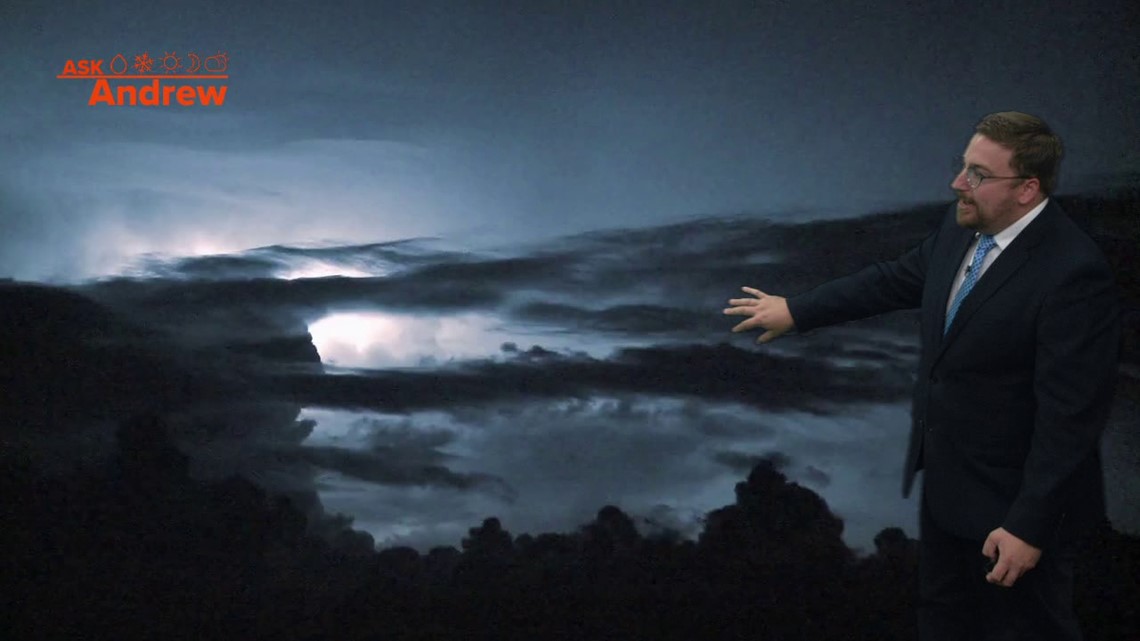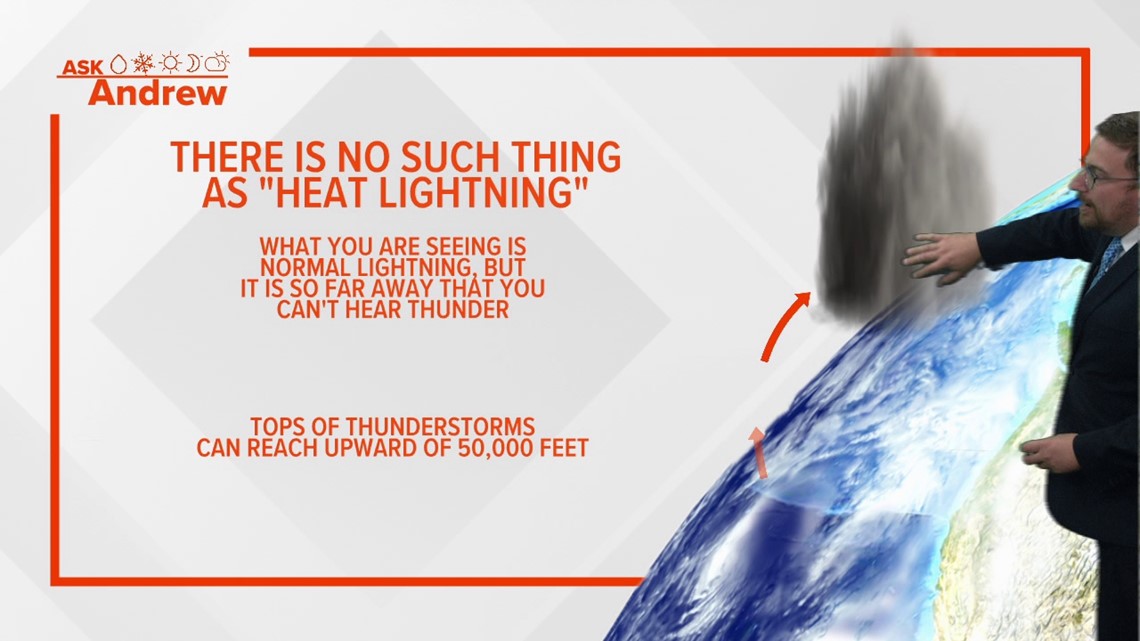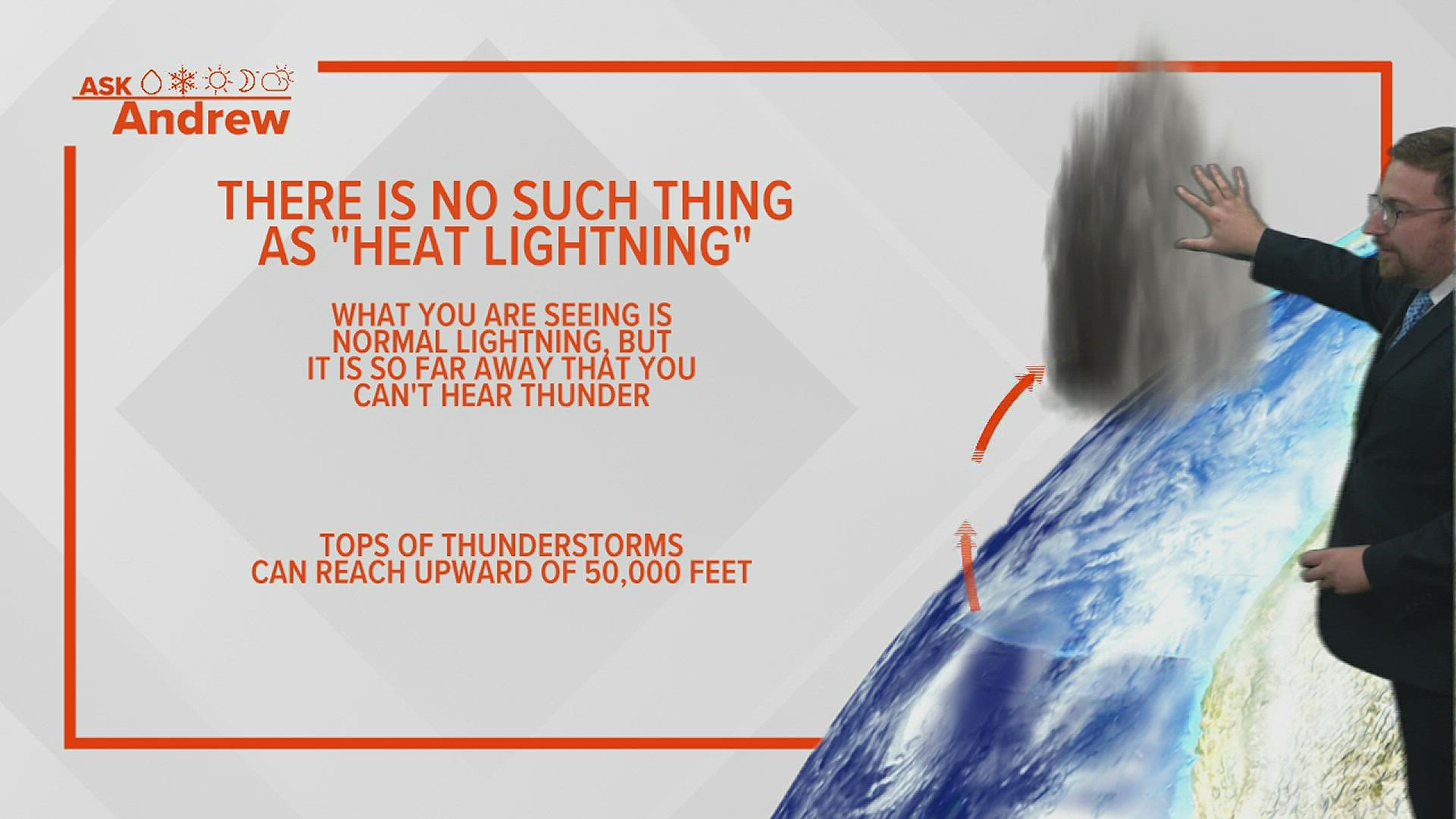MOLINE, Ill. — Picture it: Flashes of lightning in the distant sky on a warm, summer evening. Are you having flashbacks to your childhood yet? I remember growing up and witnessing those flashes, usually in the northern sky late at night well after the sun had set. On those days, it had been particularly hot, so my young mind was curious as to what was leading to the spectacular light show.
Certainly, it couldn't have been a thunderstorm. There was no thunder, at least that I could hear! It's no wonder the term "heat lightning" has gotten quite a grip on us over the years. I do have some earth-shattering news, though. Heat lightning isn't really caused by heat! Let's dig in.


Thunderstorms are one of the more impressive aspects of weather here on Earth. At peak strength, they can tower more than 50,000 feet into the atmosphere above us. That's nearly 10 miles! Pair these storms with clear skies overhead at your given location on a calm night and you've got a good recipe for quite a lightning display.


These storms are indeed caused by heat, but the lightning itself is not. We can't simply create lightning because it's hot outside or was hot out before it got dark. We need a thunderstorm to create the difference in electrical charges in order for lightning to form. This process can't occur unless we have raindrops or hail running into each other creating these charges.
Have a question you would like me to answer in a future "Ask Andrew" segment? Submit it, here!

